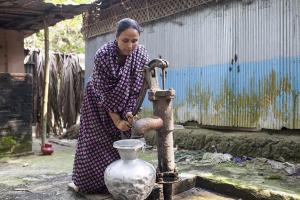The Bangladesh government is failing to adequately respond to naturally occurring arsenic in drinking water across large areas of rural Bangladesh, Human Rights Watch said in a report released today.
Approximately 20 years after initially coming to international attention, an estimated 20 million people in Bangladesh – mostly rural poor – still drink water contaminated over the national standard.
The 111-page report, “Nepotism and Neglect: The Failing Response to Arsenic in the Drinking Water of Bangladesh’s Rural Poor,” documents how Bangladesh’s health system largely ignores the impact of exposure to arsenic on people’s health. An estimated 43,000 people die each year from arsenic-related illness in Bangladesh, according to one study. The government identifies people with arsenic-related illnesses primarily via skin lesions, although the vast majority of those with arsenic-related illnesses don’t develop them. Those exposed are at significant risk of cancer, cardiovascular disease, and lung disease as a result, but many receive no health care at all.
“Bangladesh isn’t taking basic, obvious steps to get arsenic out of the drinking water of millions of its rural poor,” said Richard Pearshouse, senior researcher at Human Rights Watch and author of the report. “The government acts as though the problem has been mostly solved, but unless the government and Bangladesh’s international donors do more, millions of Bangladeshis will die from preventable arsenic-related diseases.”
Bangladesh isn’t taking basic, obvious steps to get arsenic out of the drinking water of millions of its rural poor.
Human Rights Watch interviewed 134 people for the report, including people suspected of having arsenic-related health conditions and caretakers of government wells in five rural villages, as well as government officials and staff of nongovernmental organizations. It also analyzed data regarding approximately 125,000 government water points installed between 2006 and 2012 (constituting the overwhelming majority of government water points installed during this period).


